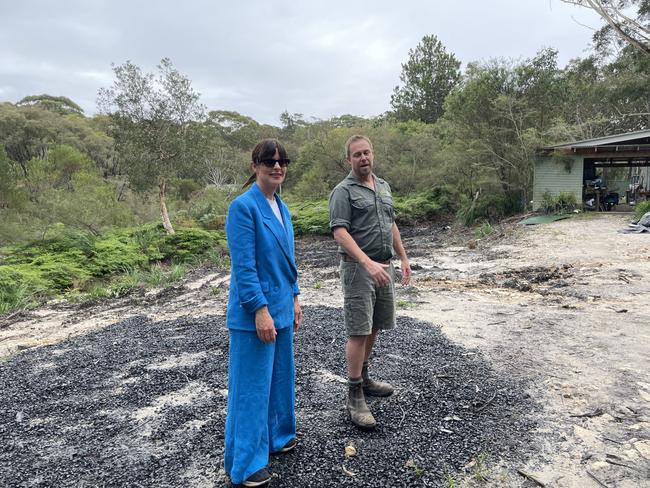New antivenom facilities planned for the Australian Reptile Park
One of the most unique election promises — probably ever — has been announced by a Government MP that involves... venomous snakes.
Central Coast
Don't miss out on the headlines from Central Coast. Followed categories will be added to My News.
An election promise has been delivered with a venomous bite at the Australian Reptile Park.
Brand new lifesaving facilities for snake milking to the tune of $1.6m have been planned for the Somersby park.
Robertson federal Liberal MP Lucy Wicks has announced that if re-elected the Coalition will kick in $580,000 to the new facility while the State Government has already delivered $300,000 and the Reptile Park $775,000.
Australian Reptile Park director Tim Faulkner said the three way partnership would see the park’s 25-year-old venom production precinct revamped.


“We’ve been extracting venom from snakes since the 1960s but the current facilities are 25 years old and are very aged and cramped.”
He said the Australian Reptile Park is the only facility in Australia that milks terrestrial snakes for venom to make into antivenom.
“If anyone is bitten by a snake in Australia, the antivenom that is produced comes from here.”
Mr Faulkner said the new “technically savvy facilities”, including modern cooling systems and a stand alone milking room and processing room, were critical to delivering the program as well as keeping staff safe and snakes happy.
Ms Wicks said the investment was in “saving lives” and said while it was a unique election promise, it was one that couldn’t be underestimated in terms of benefits.
“300 lives a year are saved thanks to the snake milking that happens here,” she said.
“It’s wonderful to see this partnership to see an investment in health infrastructure like this. This is a small investment for a very big return not only for people on the Central Coast but right around Australia saving lives.”

During a king brown snake milking demonstration, Central Coast Parliamentary Secretary Adam Crouch didn’t hesitate to offer assistance in holding the body of the snake as it was milked.
He said it was a “high energy” experience and “gets the adrenaline pumping”, with the State Government not hesitating to contribute funds to the new facilities.
“We know exactly how important milking venom from snakes and spiders is to save lives in Australia,” Mr Crouch said.
“The Australian Reptile Park is on the only provider of venom for snakes and spiders in this country. Anybody in this country that has had to have antivenom administered to save their lives, it’s because of these people here at the Australian Reptile Park.”
Mr Faulkner said the park had gone through a challenging few years during Covid, closing for six of the 18 months.

“That really put a ding to the capabilities of implementing the facility,” he said.
“We reached out for help and that’s been met. We have people risking their lives daily and they don’t have the facilities they should have at this time.”
He said snake and spider fatalities had significantly reduced because of the effective antivenom program.
“It seems like we are up here wrangling the deadliest snakes but really every snake is saving a person’s life.”
The new building will be 25m x 25m and include an opportunity for the public to walk through in a safe manner.
“It will become a part of the attraction here that people can see first hand what’s happening and how it’s done,” Mr Faulkner said.
Australia has 10/10 of the world’s venomous land snakes, with their venom evolving to become incredibly strong.


“Because of that, it means that it is incredibly fatal for us,” Mr Faulkner said
“The antivenom itself is really effective, our snakes have a predominating factor in their venom and it has lots of neurotoxins to shut your brain and body down.”
The program works with terrestrial snakes including taipans, death adders, tiger snakes, black snakes and brown snakes.
Once the venom is extracted it is freeze dried and then sent off to Commonwealth Serum Laboratories and made into antivenom. It takes hundreds of milkings to produce just one vile of antivenom. Once a snake is milked, it is fed immediately and can be milked again in two weeks.
The shelf life is around a year with Mr Faulkner describing it as a “never ending process”.
“That’s one of the greater demands and why we can’t take our finger off the pulse,” he said.
He said if all goes well, the facility would be completed by April 2023. The antivenom program has saved more than 25,000 lives since its inception in the 1960s.





